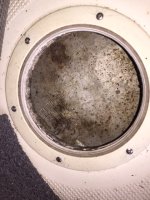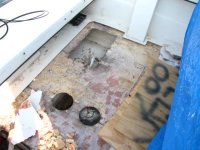Tom,
Agree with D.D.
I can save you a lot of research. If you don't already have Yamaha Command Link digital gauges on a Yamaha network it ain't worth the trouble. That Lowrance cable only works with a Lowrance MFD or (your cheapest option) LMF-200 ($200) powered up, which after 'calibrating' your network may work on your Garmin even after you remove the LMF-200. Or maybe not. However, to thread it through your engines rigging tube requires a bunch of un-rigging (throttle, shift cables etc) and labor. To do it the Yamaha Way, you need a $300 Yamaha Command Link Gateway and Bus ($55) and pigtails ($100) and several $Boat Units de-rigging/re-rigging labor. Yamaha claims other networks can back feed into their engines and cause problems, the Gateway provides one-way engine out info only. 2006 and later Yamahas only. So, you basically have to set up a Yamaha network with their interface to connect to your existing N2K network. My Yamaha 5-star techs understood what I wanted but didn't think the added engine info was worth the money and I finally agreed. Now I will not be able to monitor engine Boost Pressue, whatever that is...I have no idea. You might check under the cowling to make sure the Command Link 4-way white plastic plug (white, blue, red, black wires) wasn't routed through your rigging hose already. If you are the guy who flies the 1960 Cessna then maybe you rigged your own engine and it's no big deal for you. You can search TheHullTruth forum for the guy who cut the plug off and cut the speedo pitot tube to fish the wires through then plugged the tube (not my style).
I too was mainly interested in the fuel used/mpg/efficiency and installed 2 Garmin GFS-10 units for $150 each. Skip the optional connections to your fuel gauge as nothing gained. Skip the 30micron filter and install turbine after your (Genuine Yamaha/worth it) big blue 10 micron filter. I chose to buy some extra A1 fuel hose as I didn't want to shorten the original line at all. Flow from filter must be upwards to engine to avoid bubbles. I suspended both from looms rather than mounting on boards as a Garmin approved option. Be aware that in standard marine wiring black (old std) or yellow (new) is 12v neg, but in YamaWorld yellow is Ignition -On 12v Positive. (To reach the fuses I blew on THAT harness required removing the water heater). From the fuel line turbine you will have a network plug to plug into your transom area backbone and a long multi wire for your +/- power lead/optional tank gauge leads... and that's it. If you don't connect the gas gauge you can get your 12v power from some switched source in the back. (It can't use network power alone). Download the latest 4008 software update from Garmin's website on a SD card to update your 4008.
I like big numbers showing GPH on the 741 (GPH can be used for synching engines about as well as the RPM in my case). Grand total MPG, GPH, Gallons remaining, Range shows on the 4012...all customizable. Use the Add Fuel soft button when you fill up and it will track usage very accurately. I don't know about HDPI, but my engines at idle run off a Vapor Separator tank. The fuel pumps fill it intermittently so you'll show 45 MPG/.3GPH varying wildly at idle, but the Totalizer function still measures total fuel going through the turbine should you go idling about all day.
Oddly, my analog fuel gauges are by far the most accurate of any of 11 power boats...to 4 gal increments 2, 75gal tanks, and full and empty are spot on. I agree in advance if Dr Bob points out this is a totally un-nessessary complication of a simple boat, but I like my boy toys. It's my money and I can waste it any way I want. Besides, I feel very guilty that I'm not monitoring engine Boost Pressure.



